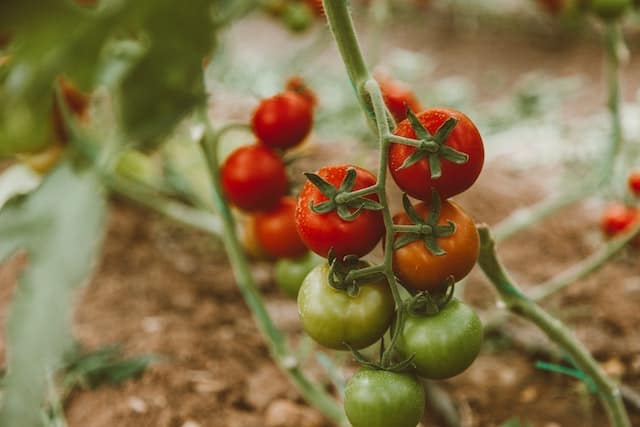Tomatoes are considered one of the, overall, most popular heirloom fruits produced by gardeners. However, when cultivating them, there are also a variety of ailments, nutritional shortages, and pests to contend with. Also, tomato branches curling down can be a hinderance for optimal harvesting.
For example, in the garden, tomato leaf issues are the most prevalent, particularly if you are planting non-heirloom kinds.
Nutritional deficiencies and over- or under-watering are the two most typical causes of your tomato stems curling downward. Root rot can also occur when a plant stops absorbing water as a consequence of overwatering, and if the problem is not addressed, your plant will die.
However, keep in mind that, overall, the most typical cause of curled branches on your tomato plant is environmental stress. Tomato branches curling down can also be caused by pests, such as aphids or whiteflies, that suck sap from the plant and cause stress, so it’s important to check for pest infestations as well.
Continue reading to learn more about tomato branches that appear to curl down, including whether this is normal, why your tomato branches appear to be curling down, as well as how to prevent this physical trait from occurring in your tomato plants, and more.
What Are Healthy Tomato Plants Supposed to Look Like?
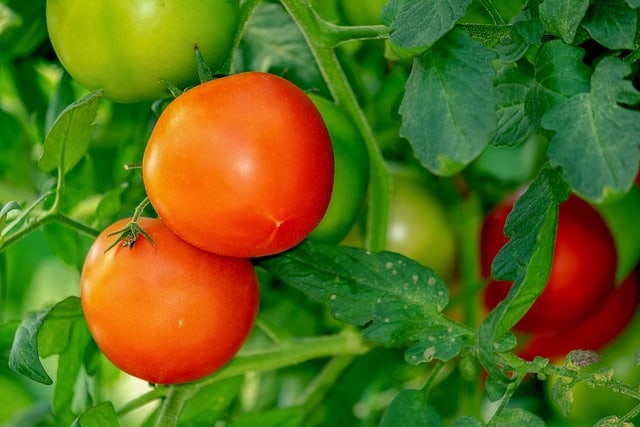
As your tomatoes mature, in order to tell if your plant is healthy or not, you’ll want to look for a green star-shaped formation on a branch and several tomatoes close by. This means that tomatoes are starting to grow.
Eventually, on a healthy tomato plant, you should also see a shift in hue, which should be yellow. This means that your tomato plants are going through their typical lifecycle.
Another thing to note is that a healthy tomato plant has medium-green leaves that are gently fuzzy. On the other hand, if your tomato plant’s leaves appear to have brown or black areas, holes, bitten edges, or fuzzy mold developing on them, you should determine the cause and start working towards rectifying the situation immediately.
Is it Normal for My Tomato Branches to be Curling Down?
No, it is not considered normal for tomato branches to curl down. Unfortunately, if your tomato branches are curled your plants may be stressed by the climate.
Another common reason why tomato branches curl is due to the fact that the soil that these plants are housed in has received too much or too little water. Take note, however, that this issue can also occasionally be caused by a nutritional deficiency.
Insects and illnesses can also cause the branches to curl.
Why Are My Tomato Branches Curling Down?
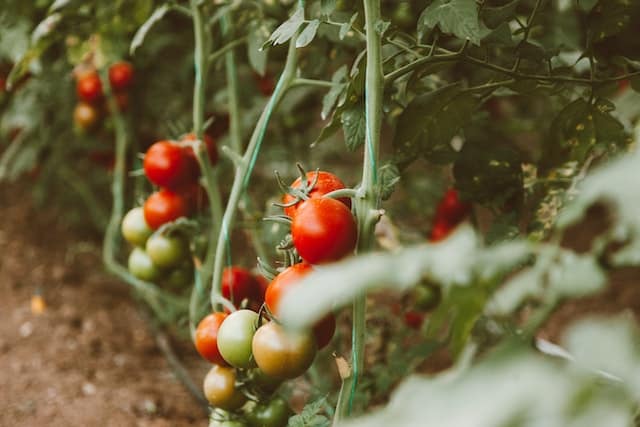
1. Climate Stress
Since tomato plants classify as one of the more vulnerable species of plants, it is important to take note that your tomato plants will be susceptible to even the smallest environmental changes.
When affected by this environmental stress, the branches on your tomato plant may curl when exposed to a lot of wind. In the event of excessive heat, the same may occur. Because of this, tomato branches often curl inward, away from harm.
In order to maintain the tomato plant’s health and encourage fruit production, it’s crucial to trim the tomato plant’s branches. Take note that the plant can and will also get stressed from over-trimming, which will cause the branches to curl.
The advantage of this issue is that it is quite simple to resolve. For example, your tomato plant should return to normal whenever the environmental stress is lessened.
2. Over or Under-Watering
Warm-season vegetables like tomatoes require a lot of water in order to yield juicy, tasty tomatoes. Take note, however, that unfortunately, underwatering or overwatering your tomato plants is the greatest error you can make.
For example, when underwater, the roots won’t be able to transfer nutrients from the soil to the branches and leaves if they don’t receive enough moisture. The branches curl as a result. On the other hand, the opposite will occur if your plant is overwatered.
Take note that overwatering can also cause root rot and a variety of other issues, so best to monitor the water level on your plant before adding any more.
Overall, the tomato plant’s branches will return to normal form if you start giving it enough water or replant it in soil that is not waterlogged.
3. Nutritional Deficiencies
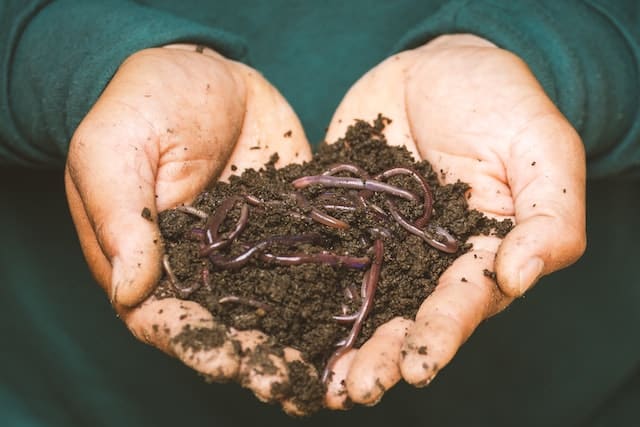
The tomato plant is a hungry plant. From seedlings, until the plant reaches maturity and produces fruit, you must, therefore, provide the proper amount of nutrients if you want to produce fruit from your plant.
Take note, that if the branches of your tomatoes begin to droop, this may be due to a lack of nutrition. For example, when growing tomato plants in a container as opposed to in the ground, this is a common issue.
This issue arises as the roots of plants that are developing in soil may reach far and deep in quest of the necessary nutrients. Since your tomato plant’s roots can’t do this in a container, you are still responsible for feeding them.
How to Prevent Your Tomato Branches From Curling Down?
Overall, the most frequent and typical reason why your tomato plant’s branches and leaves are curling is due to an environmental stressor. Therefore, in order to prevent this problem from occurring, one should first verify the surrounding conditions for the plant’s growth.
For example, use your fingertips to feel the wetness in the soil and keep an eye on the temperature outside and the amount of direct sunlight your plants are receiving throughout the day.
It is also important to note that these plants require regular hydration and adequate drainage. Therefore, instead of misting the plant from the top, think about using a soaker hose on a timer or watering thoroughly by hand.
Additionally, considering tomato plants are prone to fungal diseases, it’s critical that the leaves remain as dry as possible. Mulch should also be liberally applied all around the plant to assist keep the soil wet.
Can You Save A Tomato Plant When Its Branches Have Curled?
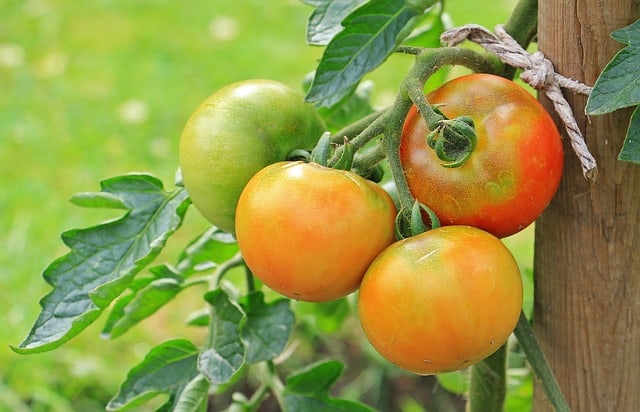
Don’t freak out if you notice a tomato branch bending or curling. It is comparable to when you have a little cold or a stomach-ache. Although it could be a sign of something more serious, it’s often not a major concern and can more often than not be fixed with ease.
Take note, however, that no matter how hard we try, a tomato plant may occasionally simply be beyond saving. For this reason, it’s crucial to always keep a few plants on hand in case the ones you currently have in your garden don’t work out.
For example, you may simply root suckers in water as backups when trimming tomato leaves. You can also compost the plant if it simply does not survive due to unfavorable conditions.
Prior to composting the ruined plant, take note to pay close attention to the major causes of mortality. After all, it’s crucial not to compost your plant if it has been affected by the leaf curl virus or herbicide damage since the virus or chemicals might persist in the soil and spread to other plants.
More on tomato plants care:
- Can You Plant Two Tomato Plants Together?
- Black Worms On Tomato Plants
- Can Tomatoes Grow in Direct Sunlight?
Final Thoughts
The two most common reasons for your tomato stems curling downward are nutritional deficits and excessive or insufficient watering. Unfortunately, when a plant stops absorbing water as a result of overwatering, root rot can also happen, and if the issue is left unattended, your plant will perish.
Take note, however, that overall, the most common reason why your tomato plant’s branches are curling is likely due to environmental stress.

Hey, I’m Lisa and I’ve been an avid gardener for over 30 years. I love writing, talking and living in the garden! Feel free to connect with me on my socials below

